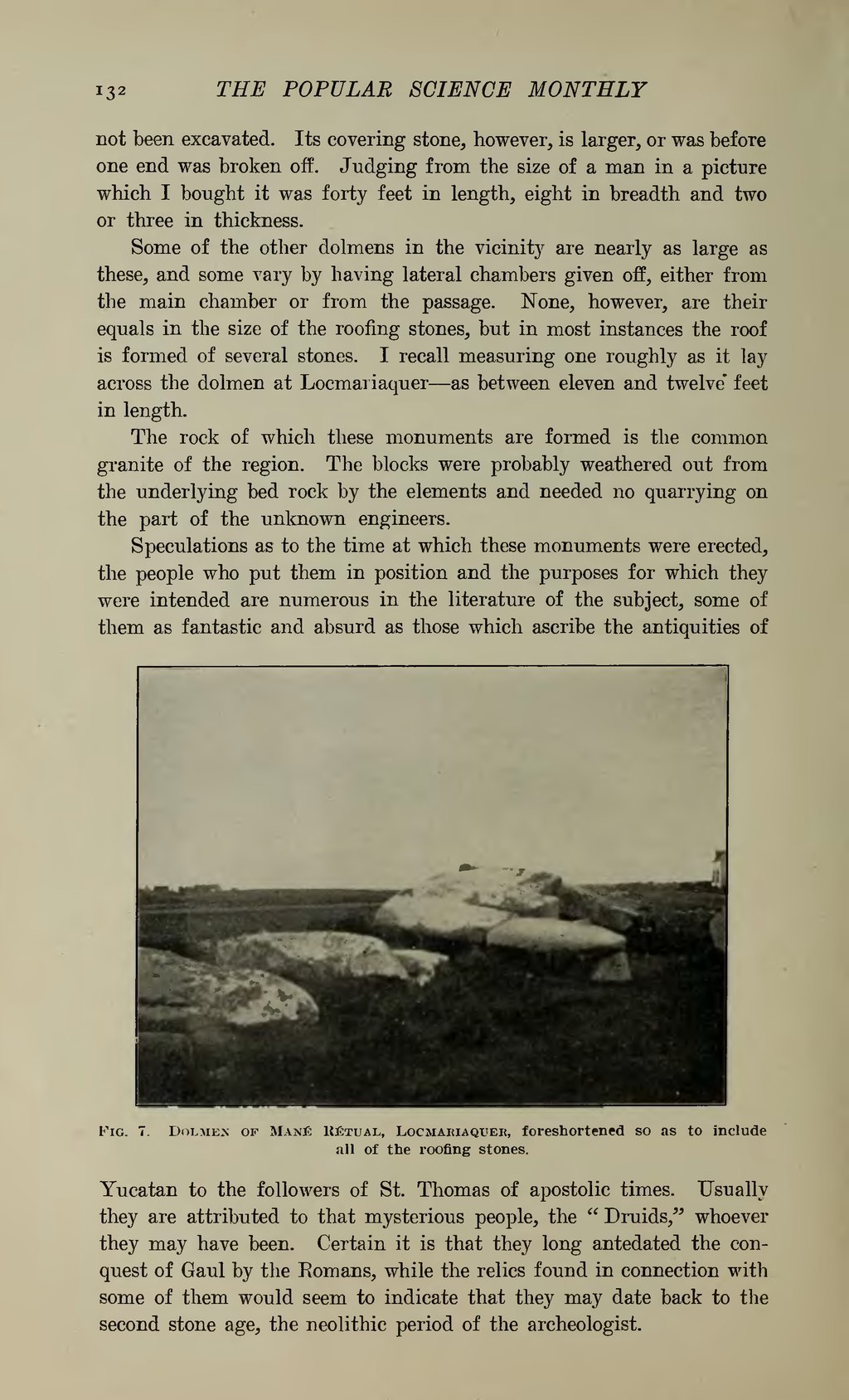not been excavated. Its covering stone, however, is larger, or was before one end was broken off. Judging from the size of a man in a picture which I bought it was forty feet in length, eight in breadth and two or three in thickness.
Some of the other dolmens in the vicinity are nearly as large as these, and some vary by having lateral chambers given off, either from the main chamber or from the passage. None, however, are their equals in the size of the roofing stones, but in most instances the roof is formed of several stones. I recall measuring one roughly as it lay across the dolmen at Locmariaquer—as between eleven and twelve feet in length.
The rock of which these monuments are formed is the common granite of the region. The blocks were probably weathered out from the underlying bed rock by the elements and needed no quarrying on the part of the unknown engineers.
Speculations as to the time at which these monuments were erected, the people who put them in position and the purposes for which they were intended are numerous in the literature of the subject, some of them as fantastic and absurd as those which ascribe the antiquities of

Yucatan to the followers of St. Thomas of apostolic times. Usually they are attributed to that mysterious people, the "Druids," whoever they may have been. Certain it is that they long antedated the conquest of Gaul by the Romans, while the relics found in connection with some of them would seem to indicate that they may date back to the second stone age, the neolithic period of the archeologist.
